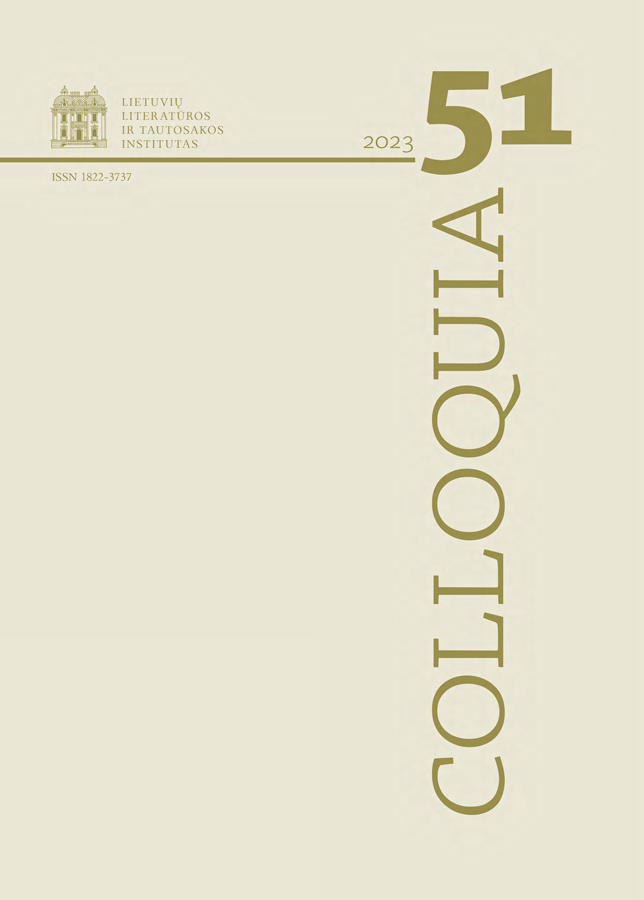Preserving the Dance: R. M. Rilke’s Concern for the Preservation of Objects and its Reflection in Lithuanian Poetry
Abstract
The article examines the connection between Rainer Maria Rilke’s concern for the preservation of objects and the poetic-aesthetic concept, which he applied to the phenomenon of dance. The article treats the dance, which receives relatively little attention as a separate art form in Rilke’s work, as a kind of (non-material) object. Overall, Rilke’s conception of the object goes beyond the “ordinary” and direct materiality. However, the desire to preserve objects in texts presupposes a special transformation, which can be identified as a distinctive phenomenological process. In Rilke’s poetry, dance appears in a variety of contexts and is often dependent on the image rather than the movement. Here, the poet applies Sehen Lernen, or “Learning to see” program. The article discusses Rilke’s poems that are related to the phenomenon of dance, including “Spanische Tänzerin” [“The Spanish Dancer”], “Toten-Tanz” [“Death-Dance”], an excerpt from “Die fünfte Elegie” [“The Fifth Elegy”] and Sonnet XVIII from Part II of Die Sonette an Orpheus [The Sonnets to Orpheus]. The article also explores the poetic reception of Rilke’s dance in Lithuanian poetry, the poems of Salomėja Nėris (“The Red Rose”), Henrikas Nagys (a fragment from “The Psalm of Fulfillment”) and Jonas Juškaitis (“Ballet”).
Downloads
Most read articles by the same author(s)
- Raimondas Kašauskas, Saulius Vasiliauskas, „In My Youth, It Seemed Pretentious to Call Myself a Writer“ , Colloquia: Vol. 49 (2022)
- Ksenija Kazarinova , Forms of Pride in Vaižgantas’s Pragiedruliai , Colloquia: Vol. 44 (2020)
- Dalia Jakaitė, Imprints of Prayer in Memory: Lyrical Subject’s Experience in the Poetry of Alfonsas Nyka-Niliūnas and Czesław Miłosz , Colloquia: Vol. 50 (2022): Colloquia
- Gintarė Bernotienė, The Return of Memory: Architecture and Landscape in Wienfried Georg Sebald’s Austerlitz and in the Autobiographical Stories of Lithuanian Exiles , Colloquia: Vol. 52 (2023): Colloquia
- Violeta Kelertienė, Birutė Putrius, Lithuanian Authors and Topics in the US , Colloquia: Vol. 44 (2020)
- Cecile E. Kuznitz, Touring Vilna: Images of the City and its Jews in Guidebooks and Travelogues, 1856–1939 , Colloquia: Vol. 48 (2021)
- Juozas Girdzijauskas, Eugenijus Žmuida, My Life: Reminiscences. Prepared by Eugenijus Žmuida , Colloquia: Vol. 45 (2020)
- Gitana Vanagaitė, Tomas Vaiseta, Mindaugas Nastaravičius, A Talk That Inquires , Colloquia: Vol. 50 (2022): Colloquia
- Laima Laučkaitė, The Iconography of Jewish Vilna during the First World War , Colloquia: Vol. 48 (2021)
- Theodore R. Weeks, Reading Vilna in the First World War , Colloquia: Vol. 48 (2021)




